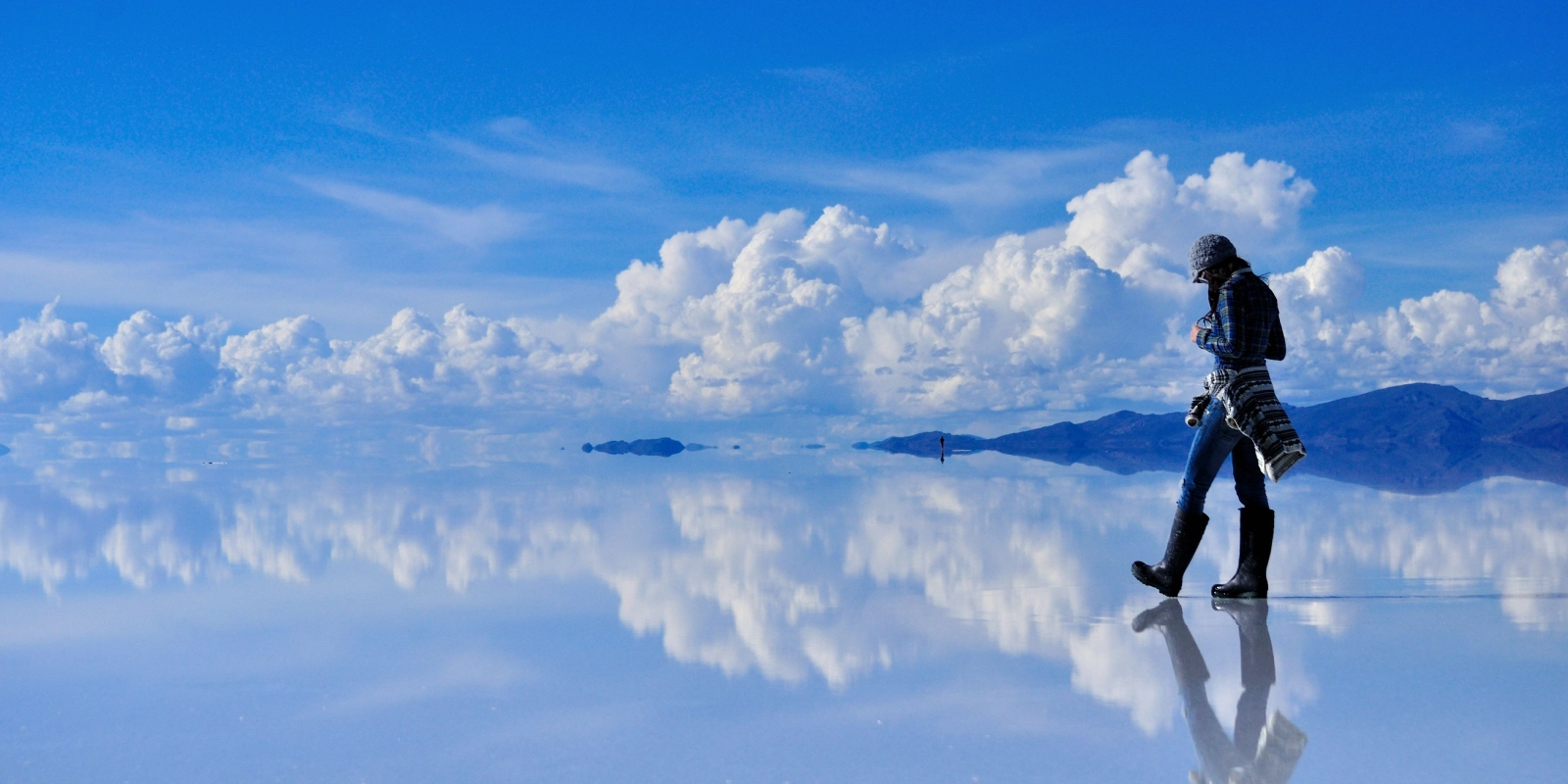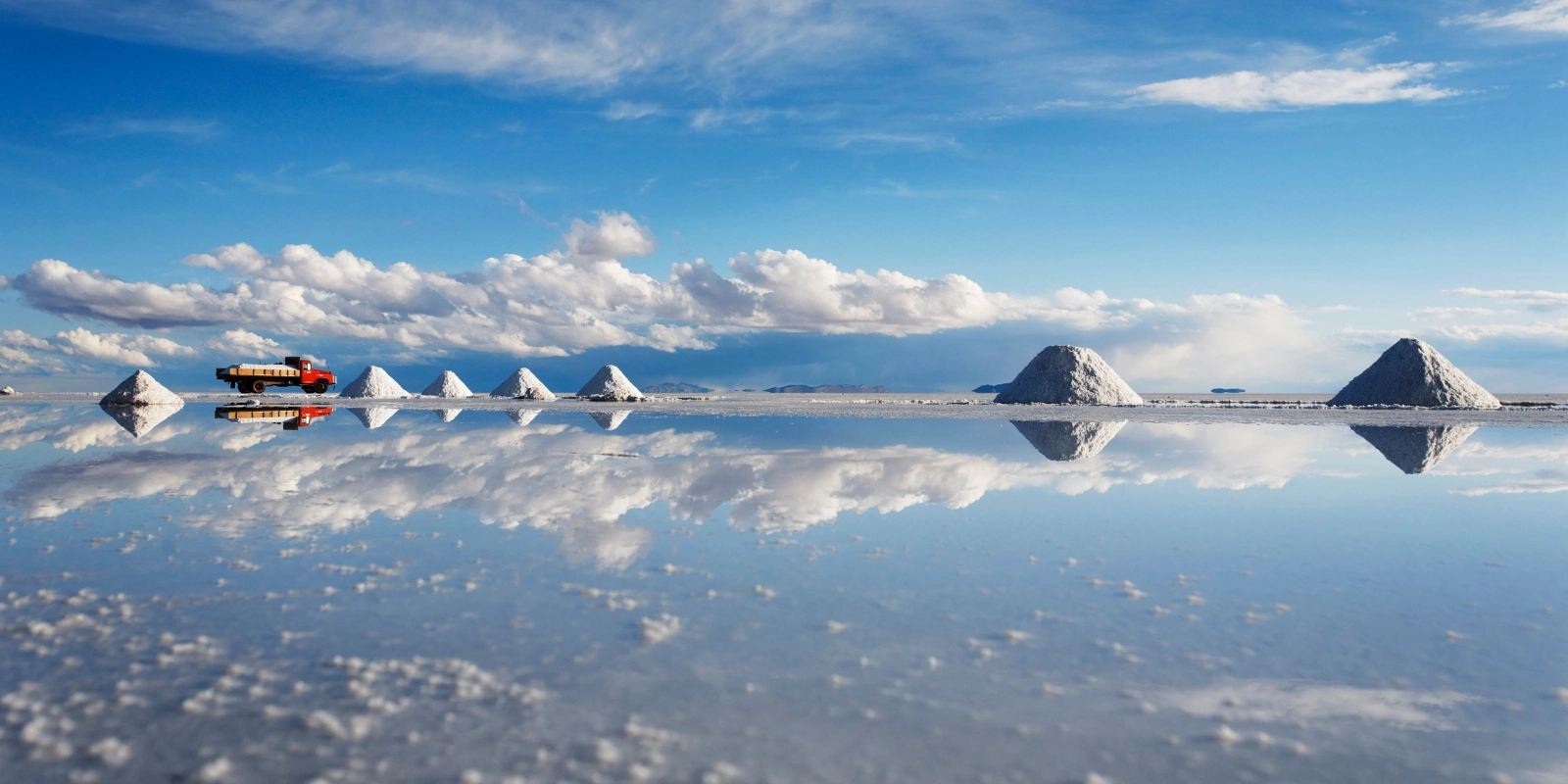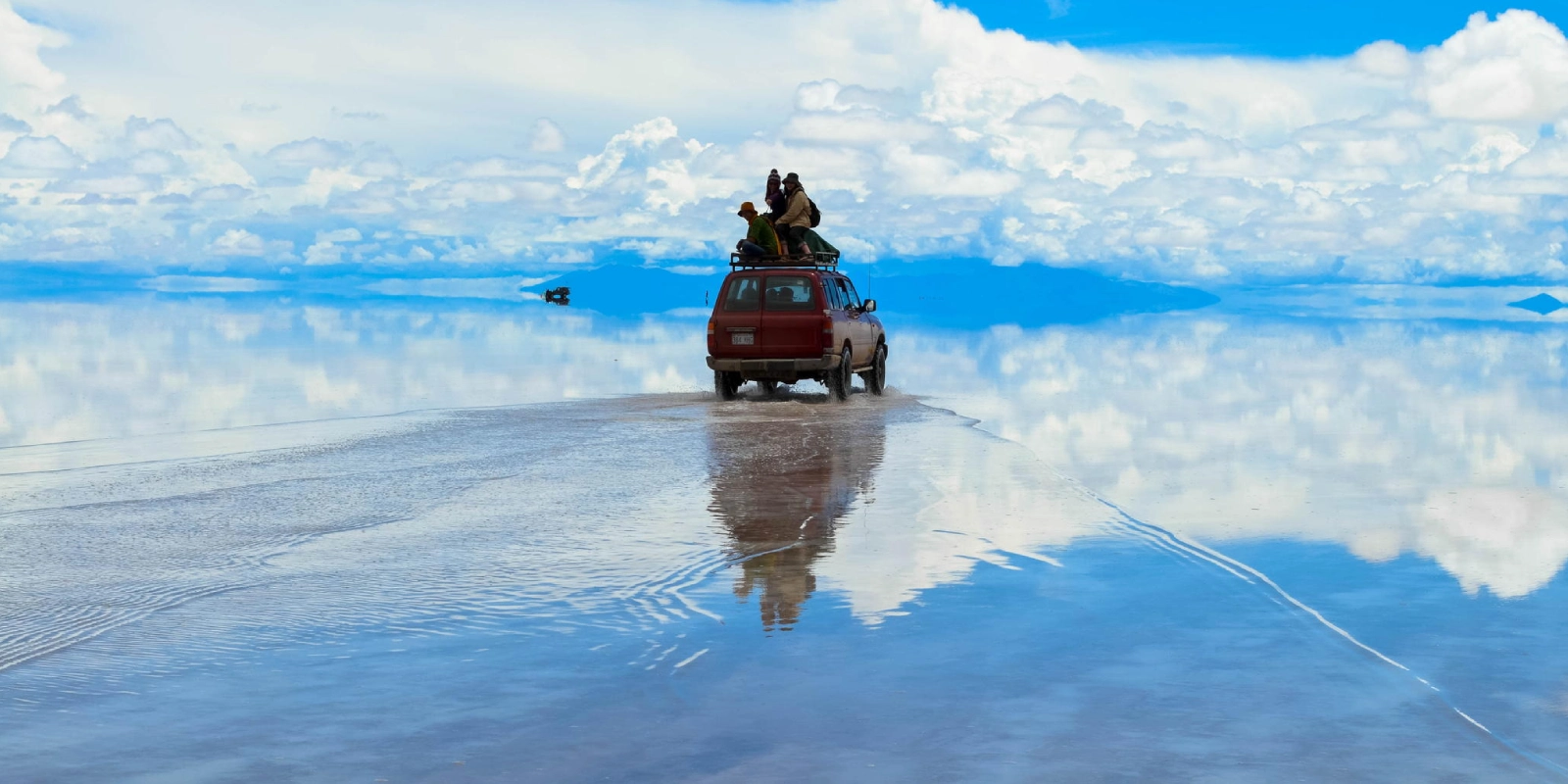Hello bloggers, today we’re going to talk about: Best time to visit Salar de Uyuni
Are you dreaming of visiting this incredible destination? You’re not alone. This enormous salt flat attracts travelers from all over the world. But when should you go? Let’s find out together.

The two faces of Salar de Uyuni
Salar de Uyuni has two main seasons, each with its own magic:
Dry season (April to November)
What’s it like? During these months, the salt flat is dry and forms an immense white salt crust that extends as far as the eye can see.
What you’ll love:
- An almost infinite white landscape that seems from another planet
- Perfect conditions for taking the famous perspective photos (those where you look giant or tiny!)
- Better access to Incahuasi Island, with its enormous cacti
- Clearer skies, ideal for stargazing at night
- Being able to explore more areas of the salt flat
The not-so-good:
- You won’t see the famous “natural mirror” that forms when there’s water
- Very cold temperatures at night (can drop to -20°C in June and July)

Rainy season (December to March)
What’s it like? The rains cover parts of the salt flat with a thin layer of water, creating a spectacular natural mirror that reflects the sky.
What you’ll love:
- The famous “mirror effect” that makes sky and earth seem to merge
- Incredible photos where it looks like you’re walking on clouds
- A unique visual experience that many consider magical
- Slightly warmer temperatures (although nights are still cold)
The not-so-good:
- Not all areas are accessible
- Higher risk of tour cancellations due to weather conditions
- Incahuasi Island may be more difficult to visit
- Roads can get complicated due to rain

So what’s the best time to go?
The answer depends on what you want to see:
Go during the dry season (April-November) if:
- You want to explore more areas of the salt flat
- You’re interested in perspective photos on the white salt
- You prefer more stable weather (though colder)
- You don’t want to risk cancellations due to weather
Go during the rainy season (December-March) if:
- Your dream is to see the famous mirror effect
- You want to take those photos where the sky is perfectly reflected
- You don’t mind that some areas aren’t accessible
- You can be flexible with your itinerary due to possible changes
The best months for each experience
The mirror effect: February is generally the month with the highest probability of seeing the natural mirror in its full glory.
For clear skies and stable weather: May to August offers the clearest days, although they’re the coldest.
For a balance: April and November can offer a balance, with the possibility of seeing small water mirrors in some areas but with better weather.
Practical tips for any season
- Bring warm clothes: Regardless of when you go, nights are always cold in the Bolivian altiplano.
- Sun protection: Radiation is very intense due to the altitude and salt reflection.
- Water and lip balm: The climate is extremely dry, stay hydrated.
- Book in advance: Especially if traveling during high season (July-August and December-February).
- Acclimatization: Remember that the Salar is more than 3,600 meters above sea level. Give yourself time to acclimatize.
Conclusion
There’s no single answer about the best time to visit Salar de Uyuni. Both seasons offer wonderful but different experiences. The important thing is to adjust your visit to what excites you most to see.
Whether you choose the dry season to admire the white immensity or the rainy season to marvel at the mirror effect, I guarantee that Salar de Uyuni will be one of the most impressive experiences of your traveling life.y season to marvel at the mirror effect, I guarantee that Salar de Uyuni will be one of the most impressive experiences of your traveling life.
Contact Us:
For more information, please contact us DREAMY TOURS, we will be happy to answer all your questions about Peru, Bolivia and Chile.
We specialize in tours and travel packages as a Travel Agency. If you need information, please contact us.
We offer tours, excursions – Peru – Bolivia – Chile:










